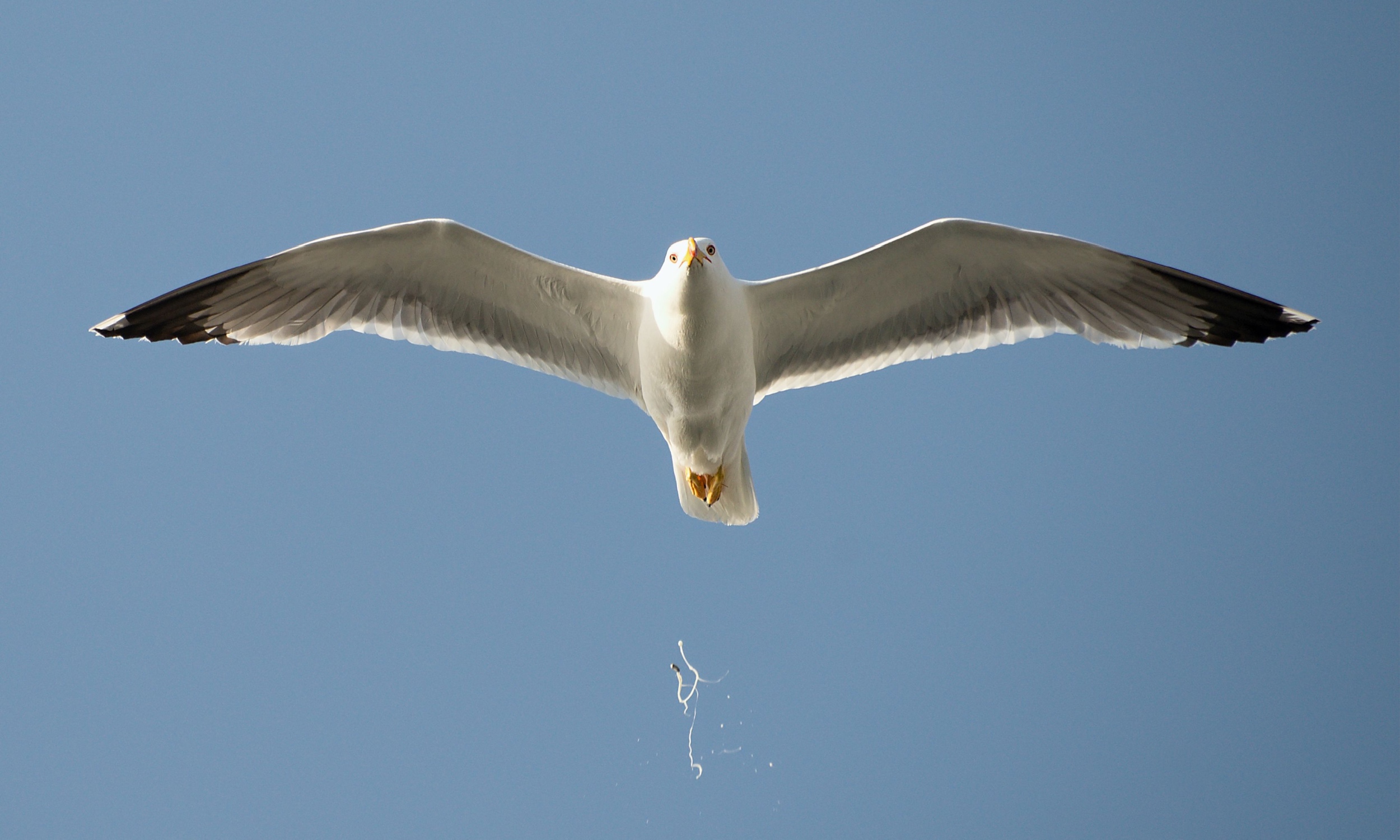From the songs of dawn to the soaring silhouettes over oceans, birds often inspire us with grace and freedom. Yet, beyond their beauty lies a deeper role: they act as movers of nutrients, linking land, sea, and sky.
Just as whales recycle nutrients through their excretions, seabirds may quietly influence marine life with something far less glamorous: their droppings.
While bird guano has long been known as a rich fertilizer for land and coastal ecosystems, what happens in the open sea is still a mystery.
Researchers recently turned their eyes to an unlikely subject, bathroom habits of seabirds far from shore. What they uncovered sheds light on how even the smallest actions can ripple across vast ecosystems.
Seabirds that only poop midair
On Japan’s remote islands, researchers noticed something unusual about streaked shearwaters. Instead of relieving themselves while floating, these seabirds poop midair.
The study revealed that the birds follow this routine every 4 to 10 minutes. This aerial approach may keep them clean and at the same time fertilize the ocean below.
Study lead author Leo Uesaka from the University of Tokyo explained that the initial focus of the research had nothing to do with bird waste.
“I was studying how seabirds run on sea surface to take off,” said Uesaka. “While watching the video, I was surprised that they dropped feces very frequently. I thought it was funny at first, but it turned out to be more interesting and important for marine ecology.”
Seabird poop and ocean nutrients
Seabird droppings are rich in nitrogen and phosphorus. On land, they enhance soils and boost coastal ecosystems. Yet, their impact at sea remains less explored.
Streaked shearwaters and their relatives, with populations totaling around 424 million, may deliver a steady nutrient supply to the open ocean. These nutrients support plankton – the foundation of marine life.
The new study compared this process to the “whale pump,” in which whales recycle nutrients through their excretion.
Just like whales, vast seabird populations may shape marine productivity through their waste. This makes their periodic bathroom habits more than just a quirk – they could influence entire food webs.
Seabirds avoid pooping in water
The team strapped tiny backward-facing cameras, the size of erasers, to 15 shearwaters. They recorded nearly 200 bathroom events.
The footage showed that the birds usually relieved themselves after takeoff. Some even took off briefly just to poop, returning to the water moments later.
Interestingly, nearly all excretion occurred midair. Only one recorded event happened while floating. This suggests the birds actively avoid releasing waste on the surface.
Researchers believe this may help seabirds keep feathers clean, reduce pathogen risks, avoid predators, and release nutrients into the ocean. The flight posture may also make it easier to exert gut pressure compared to floating.
Patterns and body weight
“Streaked shearwaters have very long and narrow wings, good for gliding, not flapping,” said Uesaka.
“They have to flap their wings vigorously to take off, which exhausts them. This means the risk of excreting on the sea surface outweighs the effort to take off. There must be a strong reason behind that.”
The research uncovered another surprising detail: the birds kept a steady rhythm, often every few minutes, regardless of how much time passed after eating. Each bird excreted about 30 grams per hour, more than 5% of its body weight.
That rapid loss could help lighten their load mid-flight, making gliding more efficient. This finding challenges earlier land-based estimates, which suggested lower excretion rates.
Implications for ecosystems
While the waste of a single bird seems trivial, the collective output of millions becomes immense. Their droppings may transport nutrients far from breeding colonies, enriching distant ocean waters. This influence might be crucial in areas where seabirds gather in large numbers.
The study also raises a health dimension. Seabird feces can carry pathogens like avian influenza. If excreted in shared feeding grounds, they might spread diseases across colonies.
This possibility highlights how seabird behavior links not only to nutrient cycles but also to marine epidemiology.
Seabirds and hidden nutrients
“We don’t know why they keep this excretion rhythm, but there must be a reason,” said Uesaka.
He plans to expand studies with longer-lasting cameras and GPS to map where droppings fall at sea. “Feces are important. But people don’t really think about it,” said Uesaka.
Ultimately, the study shows that even small, seemingly insignificant behaviors can shape ecosystems. What seems trivial may hold vital clues to how life sustains itself across the oceans.
The study is published in the journal Current Biology.
—–
Like what you read? Subscribe to our newsletter for engaging articles, exclusive content, and the latest updates.
Check us out on EarthSnap, a free app brought to you by Eric Ralls and Earth.com.
—–
